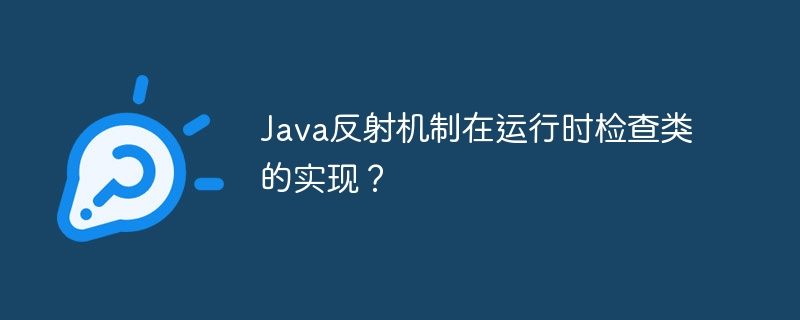Home >Java >javaTutorial >Java reflection mechanism to check the implementation of a class at runtime?
Java reflection mechanism to check the implementation of a class at runtime?
- 王林Original
- 2024-04-16 08:42:02839browse
Java reflection mechanism allows programs to dynamically access and modify class information and behavior. It can be used to obtain class metadata, inspect class implementations, compare classes, and obtain methods and fields. A practical example is dynamic proxy, which uses the reflection mechanism to create proxy instances for classes and intercept and modify method calls. Therefore, the reflection mechanism provides powerful capabilities for high-level programming, allowing developers to create more flexible and dynamic applications.

Java reflection mechanism: implementation of check class at runtime
Introduction
The Java reflection mechanism allows programs to dynamically access and modify class information and behavior at runtime. This is critical for many advanced programming techniques, such as dynamic proxies, unit testing, and code generation.
Get class metadata
To use the reflection mechanism, you need to obtain the Class object representing the class. You can use the following methods:
// 通过对象获取 Class 对象
Object obj = new MyClass();
Class<?> clazz = obj.getClass();
// 通过类名获取 Class 对象
Class<?> clazz = Class.forName("java.lang.String");Check the implementation of the class
Once you have the Class object, you can check the implementation of the class:
- Get the parent class and interface:
// 获取父类 Class<?> superclass = clazz.getSuperclass(); // 获取接口 Class<?>[] interfaces = clazz.getInterfaces();
- Compare the implementation of the class:
// 两个类是否相等 boolean isEqual = clazz1.equals(clazz2); // clazz1 是否是 clazz2 的子类 boolean isSubclass = clazz1.isAssignableFrom(clazz2);
- Get methods and fields:
// 获取类中的方法 Method[] methods = clazz.getMethods(); // 获取类中的字段 Field[] fields = clazz.getFields();
Practical case: dynamic proxy
Dynamic proxy uses reflection mechanism to run Create a proxy instance for the class. This proxy can intercept and modify method calls in the class.
// 创建动态代理工厂,指定目标对象
InvocationHandler handler = (proxy, method, args) -> {
// 拦截方法调用,执行自定义逻辑
// ...
// 调用目标方法
Object result = method.invoke(target, args);
// 返回结果
return result;
};
Proxy proxy = (T) Proxy.newProxyInstance(targetClass.getClassLoader(), targetClass.getInterfaces(), handler);Conclusion
The Java reflection mechanism provides powerful capabilities for dynamically inspecting and modifying class implementations at runtime. It is widely used in a variety of advanced programming techniques, enabling developers to create more flexible and dynamic applications.
The above is the detailed content of Java reflection mechanism to check the implementation of a class at runtime?. For more information, please follow other related articles on the PHP Chinese website!

